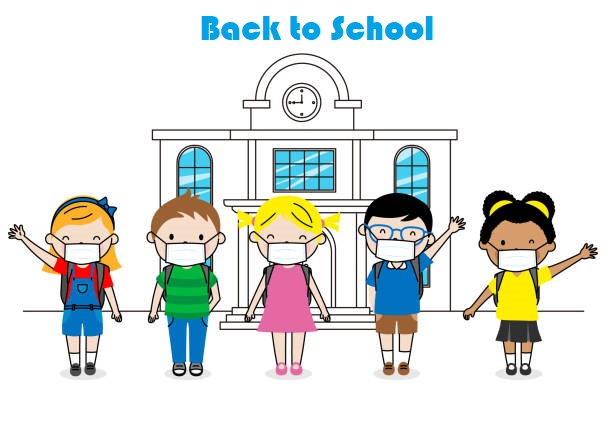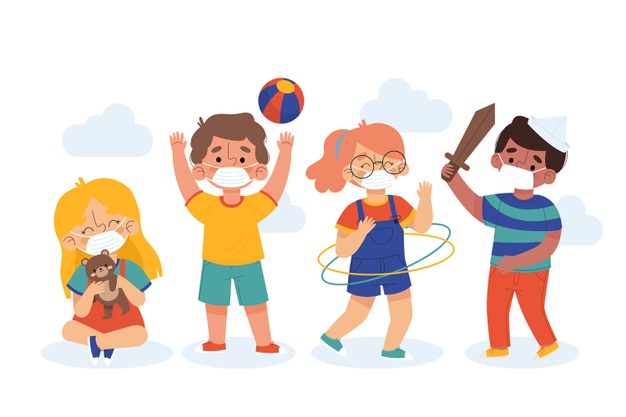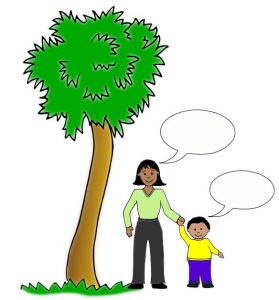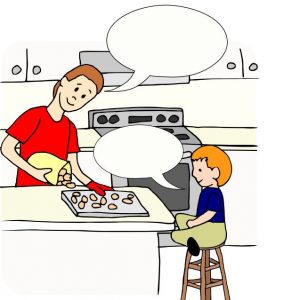
This will be a back to school year like no other! We will be smiling behind our masks and are excited to see everyone again. Wearing masks helps reduce the spread of COVID-19 in the community but it can sometimes make communication more difficult, especially for people who have trouble speaking or hearing.
Communication challenges:
• Masks make voices muffled and harder to hear.
• Masks cover facial expression and prevent speech reading. Without visual cues, people with hearing loss or communication difficulties may have even more trouble understanding what they are hearing.
• People with communication difficulties may not be able to make themselves understood through a mask.
Communication strategies when wearing a mask:
• Move to a quiet place, or reduce competing noises in the environment.
• For those who wear hearing aids, ensure they are working well.
• Face your communication partner and make sure nothing is blocking your view.
• Get the attention of your communication partner before you start talking.
• Ask what you can do to make communication easier for both of you.
• Speak a little more slowly and slightly louder than usual, but do not shout or exaggerate your speech.
• Use your eyes, hands and body movements to add more information to your speech.
• Use a voice amplifier.
• Ask if your communication partner understood you. If not, repeat, rephrase or write it down.
• Use speech-to-text apps to transcribe speech in real time.
Please see General Public Masks Info Sheet by Speech-Language and Audiology Canada for further information.
Have a safe and healthy school year!



 Your child’s teacher and school librarian always encourage reading books at home. Keep reading below or
Your child’s teacher and school librarian always encourage reading books at home. Keep reading below or  You can support your child’s language skills when playing inside on rainy days, or whenever your child needs to take a movement or brain break to play!
You can support your child’s language skills when playing inside on rainy days, or whenever your child needs to take a movement or brain break to play!  While keeping a safe physical distance from others, you can support your child’s language skills when playing outside.
While keeping a safe physical distance from others, you can support your child’s language skills when playing outside.  During this unprecented time of social distancing, many of us are eating at home with our families more than before. Cooking together is a wonderful way to work on language goals with your child! Narrate as you plan and cook together. This provides a language model for your child and is a great way to introduce new vocabulary and grammar. For example, “First I am mixing in the eggs, then I will mix in the milk”. Remember to speak in the first person instead of referring to yourself as Mommy/Daddy (e.g., use “I am mixing in the eggs.” instead of “Mommy is mixing in the eggs.”). Meals are also a great time to sit and practice language in a relaxed way.
During this unprecented time of social distancing, many of us are eating at home with our families more than before. Cooking together is a wonderful way to work on language goals with your child! Narrate as you plan and cook together. This provides a language model for your child and is a great way to introduce new vocabulary and grammar. For example, “First I am mixing in the eggs, then I will mix in the milk”. Remember to speak in the first person instead of referring to yourself as Mommy/Daddy (e.g., use “I am mixing in the eggs.” instead of “Mommy is mixing in the eggs.”). Meals are also a great time to sit and practice language in a relaxed way.